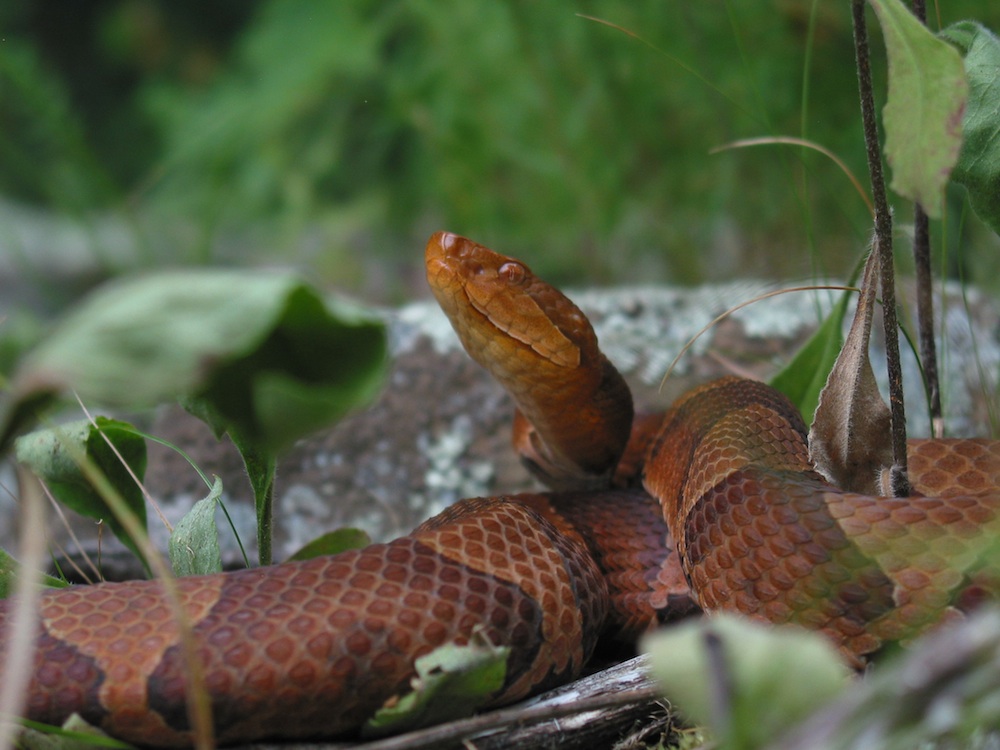Virgin Birth Discovered in Pit Vipers

Deadly pit vipers are capable of virgin birth, scientists now find, joining their constrictor relatives in the ability to reproduce without sex.
Female pit vipers can also conserve sperm after sex for at least a whopping five years, shedding light on the lengths these serpents will go to in order to procreate, researchers added.
Asexual reproduction is common among invertebrates — that is, animals without backbones — and is rare in vertebrates, but not unheard of. For instance, the komodo dragon, the world's largest living lizard, has given birth via parthenogenesis, in which an unfertilized egg develops to maturity. Such virgin births have also been seen in sharks at least twice now, and occasionally in birds and amphibians.
Scientists had even discovered a boa constrictor that could reproduce by virgin birth. Now, for the first time, researchers find that pit vipers can do so as well.
Virgin births
Evolutionary and population geneticist Warren Booth at North Carolina State University at Raleigh and his colleague Gordon Schuett investigated a female copperhead (Agkistrodon contortrix) kept at the North Carolina Aquarium at Fort Fisher. Over the past five years, she had come into contact with only one male snake — a corn snake (Pantherophis guttatus) — and interbreeding between the two species is considered unlikely or impossible.
In 2009, this copperhead gave birth to a litter of four offspring that were outwardly normal in appearance, two of which were alive at birth. Analysis of DNA from the mother, one live offspring and one of the stillborn progeny revealed no signs of genes from a father, suggesting a true virgin birth.
Sign up for the Live Science daily newsletter now
Get the world’s most fascinating discoveries delivered straight to your inbox.
"With the availability of DNA fingerprinting technologies, we are now becoming aware that the process of parthenogenesis is in fact more common than we ever imagined," Booth told LiveScience.
Parthenogenesis may have evolved in these snakes as a mechanism to battle a lack of suitable mates. [Top 10 Swingers of the Animal Kingdom]
"Instead of wasting eggs, which are costly to produce and a finite resource, parthenogenesis may represent an alternate means of reproduction to overcome this," Booth said. In light of the loss of habitat these snakes face, virgin births might allow this species to hold on a little longer, he added.
Sperm banking
The scientists also looked at a female eastern diamond-backed rattlesnake (Crotalus adamanteus) that was captured while sexually immature and kept isolated from males in captivity for at least five years. In 2010, it gave birth to a total of 19 healthy offspring. Genetic analysis of the mother and each of the offspring revealed genes from a father in each of the progeny. This suggested the single mother had mated with one or more males before her capture and conserved the sperm for at least five years until she was mature enough to reproduce.
Females of a number of species are known to store sperm for a variety of purposes — for instance, to keep sperm around until their egg cells are ready. However, this may be the longest recorded case of sperm storage in any vertebrate, and the first confirmed instance in snakes.
"Mating opportunities may be rare in many species," Booth said. It therefore makes sense "for a species to have solved this problem through the evolution of mechanisms by which mating can occur when the opportunity arises and the spermatozoa stored until needed."
Altogether, these findings show that this lineage of snakes "is particularly well-adapted to insuring the production of offspring when conditions may be adverse," Booth noted.
There may even be practical applications from this work.
"Researchers interested in understanding the mechanisms behind successful long-term sperm storage may want to take a closer look at this group, particularly in light of its potential application to both human and livestock sperm storage," Booth said.
Booth and Schuett detailed their findings online Oct. 10 in the Biological Journal of the Linnean Society.
Follow LiveScience for the latest in science news and discoveries on Twitter @livescience and on Facebook.











